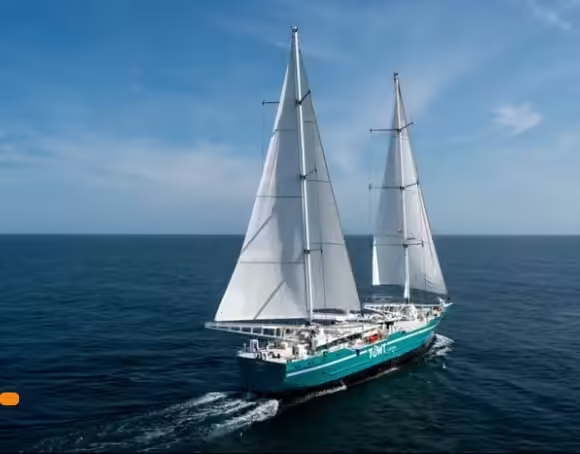The world’s largest sailing cargo ship, the *Oceanbird*, has successfully completed its first transatlantic voyage, marking a significant milestone in sustainable maritime transport. The vessel, designed to reduce carbon emissions in the shipping industry, relies primarily on wind power to propel its massive sails across the ocean.
The *Oceanbird* represents a groundbreaking shift in the shipping industry’s approach to reducing its environmental footprint. The ship’s design incorporates towering retractable sails, which can harness wind power more effectively than traditional sailboats. This innovative approach allows the *Oceanbird* to transport cargo across vast distances while emitting significantly fewer greenhouse gases compared to conventional cargo ships powered by fossil fuels.
The transatlantic voyage, which began in Europe and concluded in the United States, was a crucial test of the ship’s capabilities in real-world conditions. Throughout the journey, the *Oceanbird* demonstrated its efficiency and resilience, successfully navigating through various weather patterns while maintaining its speed and course. The ship carried thousands of tons of goods, showcasing its potential to revolutionize the future of cargo transport on a global scale.
Environmental advocates and industry leaders have hailed the successful voyage as a pivotal moment in the fight against climate change. The shipping industry is responsible for a significant percentage of global carbon emissions, and vessels like the *Oceanbird* offer a promising alternative that could help reduce the industry’s environmental impact.
The *Oceanbird*’s transatlantic crossing marks the beginning of a new era in shipping, where sustainable practices and innovation can coexist with economic growth. As more ships like the *Oceanbird* are developed and deployed, the world may witness a major transformation in how goods are transported across the world’s oceans.
